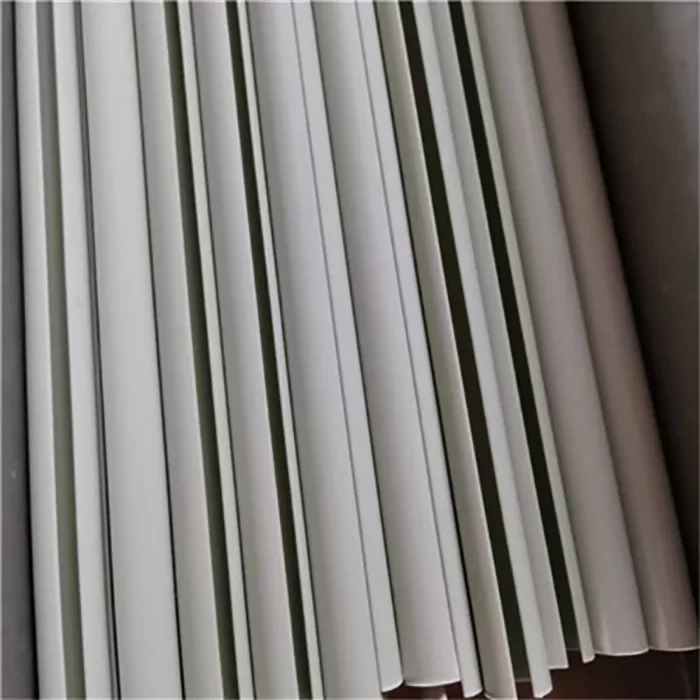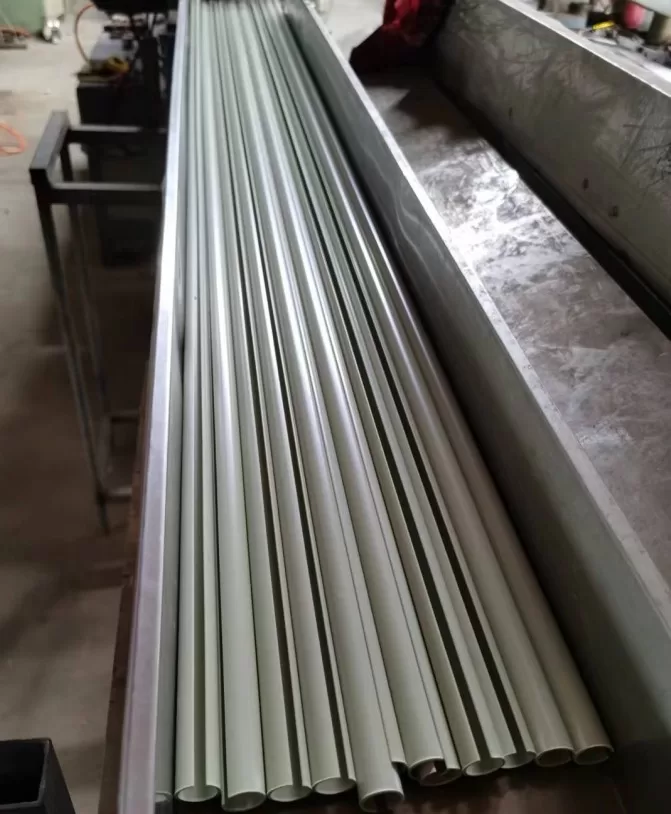
Plastic riser tubing for FTTH (Fiber-to-the-Home) is a type of tubing that is used to protect and route optical fiber cables from a distribution point (DP) to a customer’s premises. It is typically made of a high-density polyethylene (HDPE) material and is available in a variety of different sizes and configurations to meet the specific needs of each installation.
Plastic riser tubing is a critical component of FTTH networks, as it provides a number of important benefits, including:
- Protection: Plastic riser tubing protects optical fiber cables from physical damage from the elements, rodents, and other hazards.
- Routing: Plastic riser tubing allows optical fiber cables to be routed through a variety of different environments, including aerial, underground, and indoor locations.
- Cost-effectiveness: Plastic riser tubing is a relatively inexpensive material, making it a cost-effective solution for FTTH networks.
Types of Plastic Riser Tubing for FTTH
There are two main types of plastic riser tubing for FTTH:
- Single-wall tubing: Single-wall tubing is a single layer of HDPE material. It is the most common type of plastic riser tubing used for FTTH networks.
- Double-wall tubing: Double-wall tubing consists of two layers of HDPE material with a corrugated inner layer and a smooth outer layer. It is more expensive than single-wall tubing, but it provides additional protection for optical fiber cables in harsh environments.
Selection of Plastic Riser Tubing for FTTH
When selecting plastic riser tubing for FTTH, there are a number of factors to consider, including:
- Environment: The type of environment in which the tubing will be installed will determine the type of tubing that is required. For example, double-wall tubing is recommended for installations in harsh environments, such as direct burial or aerial applications.
- Cable count: The number of optical fiber cables that will be routed through the tubing will determine the required diameter of the tubing.
- Kosten: Plastic riser tubing is a relatively inexpensive material, but the cost of the tubing will vary depending on the type of tubing, the diameter of the tubing, and the length of the tubing required.
Installation of Plastic Riser Tubing for FTTH
Plastic riser tubing can be installed in a variety of different ways, depending on the specific application. For aerial installations, the tubing is typically suspended from poles or other structures using cable ties or other fasteners. For underground installations, the tubing is typically buried in a trench and protected with a conduit. For indoor installations, the tubing is typically routed through walls and ceilings using cable trays or other methods.
Benefits of Plastic Riser Tubing for FTTH
There are a number of benefits to using plastic riser tubing for FTTH networks, including:
- Duurzaamheid: Plastic riser tubing is made of a durable HDPE material that is resistant to corrosion, impact, and other hazards.
- Flexibility: Plastic riser tubing is flexible enough to be routed around corners and other obstacles.
- Water resistance: Plastic riser tubing is water resistant, making it suitable for use in underground and outdoor applications.
- Lightweight: Plastic riser tubing is lightweight, making it easy to install and transport.
- Cost-effectiveness: Plastic riser tubing is a relatively inexpensive material, making it a cost-effective solution for FTTH networks.
Applications of Plastic Riser Tubing for FTTH



Plastic riser tubing is used in a variety of FTTH applications, including:
- Aerial installations: Plastic riser tubing is commonly used for aerial installations, where it is suspended from poles or other structures.
- Underground installations: Plastic riser tubing can also be used for underground installations, where it is buried in a trench and protected with a conduit.
- Indoor installations: Plastic riser tubing can also be used for indoor installations, where it is routed through walls and ceilings using cable trays or other methods.
Conclusie
Plastic riser tubing is a critical component of FTTH networks, as it provides a number of important benefits, including protection, routing, and cost-effectiveness. When selecting plastic riser tubing for FTTH, it is important to consider the environment in which the tubing will be installed, the number of optical fiber cables that will be routed through the tubing, and the cost of the tubing. Plastic riser tubing can be installed in a variety of different ways, depending on the specific application. It is used in a variety of FTTH applications, including aerial installations, underground installations, and indoor installations.

